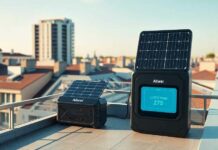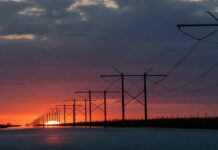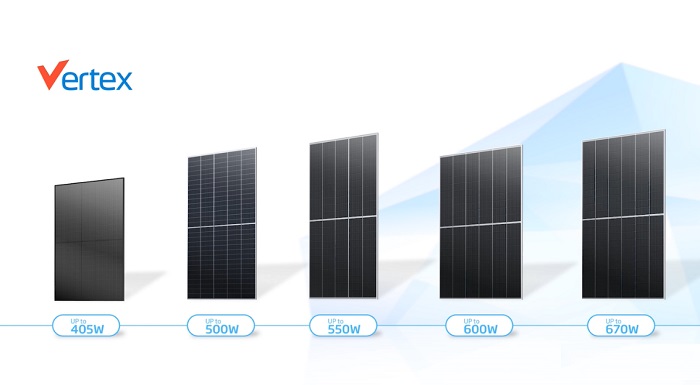Trina Solar, the leading global PV and smart energy total solution provider, announced that its latest n-type solar modules, Vertex N NEG21C.20
and Vertex N NEG19RC.20, have received the Bureau of Indian Standards (BIS) certification.
These modules will be exhibited at the Renewable Energy India (REI) tradeshow being held in New Delhi (4-6 October). Gaurav Mathur, Director of Trina Solar India, says: “The launch of our latest highperformance Vertex N modules into India, following the BIS certification, is in line with
India’s target of having 500GW of renewable energy by 2030.”
The latest Vertex N NEG21C.20 offers 700W+ maximum power output and up to 22.5 percent module efficiency to deliver high customer value, reliability, energy yield, at lower levelized cost of energy (LCOE) and balance of system (BOS) cost. Meanwhile, the Vertex N NEG19RC.20 delivers power output of 610W and efficiency of up to 22.6 percent. Both these modules use larger-size solar cells, 210*210mm and 210*182mm respectively, that generate more power than earlier generation, smaller-size cells.
A notable feature of these modules is the cutting-edge i-TOPCon technology or tunnel oxide passivated contact cell technology that enhances energy conversion efficiency. The ultra-thin tunnelling oxide layer contains unabsorbed light, increasing the cells’ efficiency, allowing the module to harvest more energy per unit area.
The n-type modules also optimise bifacial power generation performance (bifaciality factor 80%±5%), and are highly compatible with TrinaTracker’s smart trackers, performing well in extreme weather conditions and challenging terrains – characteristic of India.
These modules incorporate other market-leading technologies: multi-busbar (MBB) for greater light absorption and high-density packing to maximize the surface area. Nondestructive cutting technology is used so the cells have ultra-smooth edges. It has been proven that such cells improve the module’s overall mechanical performance to better withstand external forces being applied to the module.
Mathur says: “The launch of our new n-type modules in India demonstrates our commitment to offer state-of-the-art smart energy solutions to India.” A key trend in the global solar industry is that solar modules based on n-type solar cell technology is replacing p-type solar cell technology. “India is Trina Solar’s second largest market in Asia Pacific, after China, so serving the needs and expectations of this market is a top priority for us.
Our n-type modules are ideal for solar commercial, industrial, and utility-scale projects in India, as the country mobilizes to meet the ambitious renewable energy target,” adds Mathur. Trina Solar is at the forefront of commercializing n-type technology, ramping up production
and making it a mainstream product. By the end of the year, Trina Solar’s n-type wafer capacity is forecast to reach 50GW, module capacity 95GW and cell production capacity 75GW, including 40GW of n-type cells




































